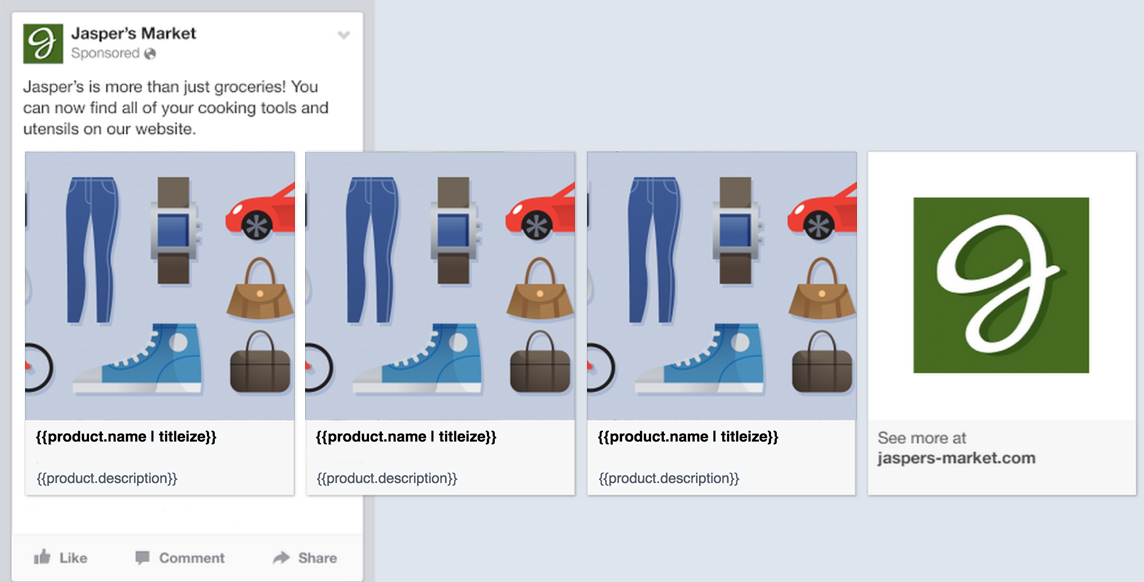Today there are so many different tools and tactics available to grow your ecommerce sales. Where do you start? What’s the best bang for your buck to increase your sales within the next 24-48 hours? Assuming you have the right team and tools in place, here’s an overview of our top 5 recommended strategies that are both time and cost effective.
1. Start Running Facebook & Instagram Ads Immediately
Many ecommerce success stories from around the web stem from the use and mastering of Facebook ads. With a minimal investment up front and over 1 billion active Facebook users around the world, Facebook advertising is the best tool available to drive targeted traffic to your site TODAY.
Facebook’s advertising tools are primed for ecommerce brands, giving the ability to:
- Retarget people who’ve visited your site but didn’t buy and show them the exact product they were looking at.
- Up-sell existing customers after they leave your site.
- Tag your products within your Facebook and instagram posts.
- Target people who are most likely to make a purchase.
- Import your highest spending customers and Identify new people across the world to reach who have the same online purchase activity as them.
- And much more…
Here’s an example of the return on ad spend we produced for a client with a minimal budget:

You can see the overall spend was $512 which resulted in $11,860 in revenue with a ROAS (return on ad spend) of 23.14!
Can see the potential here?
There are 4 keys to becoming successful with Facebook ads:
- Ensure you’re targeting the right people.
- Ensure you have the right messaging and creative.
- Ensure you’re sending them to the right place on your site.
- Test EVERYTHING (messaging, creative, audience, placement, landing page) and test often.
Don’t expect it to be a walk in the park though. If you don’t have enough data for Facebook to learn from, it may take a bit longer to build our your audience data. If you have a healthy email list, decent traffic coming to your site, or exist in a niche with super passionate customers, you can started bringing in sales quickly.
In any case, it’s important you get started on some basic facebook ad campaigns to get your feet wet. While getting started is relatively inexpensive, it can take time and money to perfect your ads. Be patient and pay attention to Facebook’s reporting to learn, optimize and grow.
Check out our done-for-you Facebook ad management services if you’re looking to hit the ground running right.
2. Start retargeting on multiple ad networks
Alongside Facebook & Instagram Ad retargeting, you need to have a larger retargeting plan in place and think about reaching on other networks.
What is retargeting?
Have you ever seen those ads that follow you around the web after you visit a website? How did they know you were just looking at backpacks? The magic is in ad retargeting.
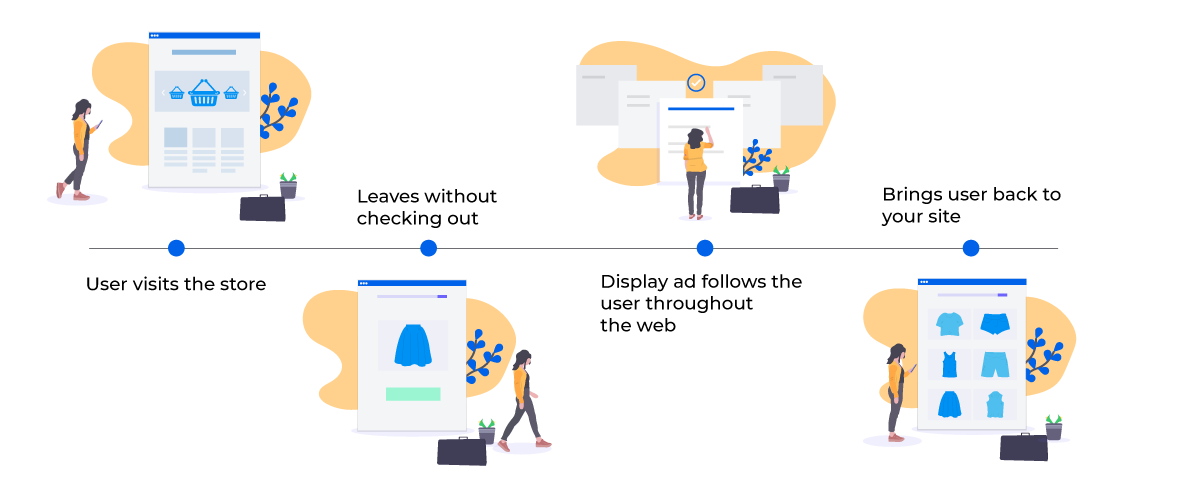
Ad retargeting involves placing a pixel on your website that tracks users who take specific actions on your site. When that action is triggered, and the customer leaves your site, retargeting software kicks and a displays a highly targeted ad based on the information in that pixel.
So if we take the backpack example again. When I reached the backpack landing page after clicking the Google Shopping Ad, that site would have saved a cookie on my computer recording my visit to this page. Now, when I go view other sites around the web that earn money from advertising, those sites can read that cookie and return a specific ads that corresponds to it. It’s a bit creepy and genius all in one.
How powerful is retargeting? Check out a few stats:
- Customers who see retargeted ads are 70% more likely to convert on your website. [source]
- The average CTR for retargeted ads is 10x that of display ads. [source]
- Website visitors who are retargeted with display ads are more likely to convert by 70%. [Source]
- 3 of 5 online viewers notice and consider ads showing products they viewed from another page. [Source]
Retargeting has huge benefits for ecommerce brands:
- It gives you a second chance to recapture a lost customer.
Visitors who were interested in your product but didn’t have the time to immediately make a purchase can be reminded of that product as they browse the web days or weeks later. - It gives your brand a larger than life appearance.
A visitor seeing your brand everywhere could give you the appearance of a large, reputable brand and provide more trust in completing a purchase. - It gives you the ability to cross-sell & up-sell.
By showing ads with comparable or add on products to the original product they were viewing allows you to potentially capture additional sales.We recommend all our clients to get started on some retargeting campaigns, and you can easily use a service like AdRoll to start inexpensively.
What other retargeting networks are available?
There are at least 200 other ad networks you can use to retarget your customers. Some of the most notable are Google Ads, Bing Ads, Criteo, and Outreach.
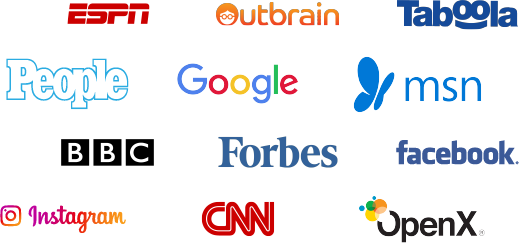
AdRoll is a service we recommend that aggregates all of these networks into a single management platform. The service is pay as you go and you can started instantly.
If you’re interested getting Adroll set up for your site, feel free to reach out to us and we’d be happy to help.
3. Audit your website for usability and conversion issues
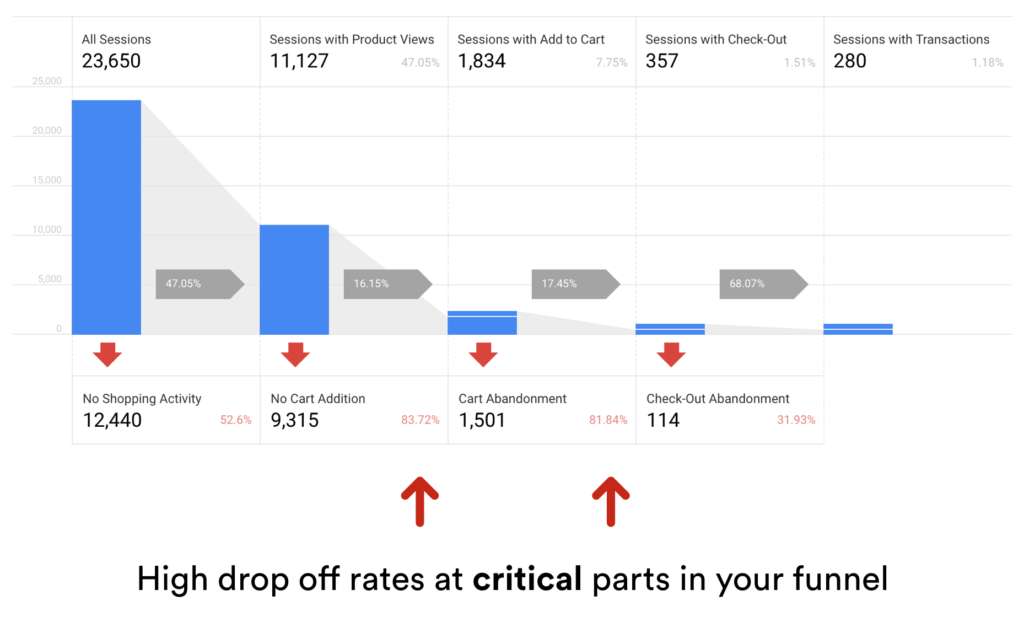
It’s not just about getting people to your site, it’s about getting them to convert once they get there. While getting traffic to your site should be a major focus for you, there are many more pieces to the puzzle.
- Where are users landing once they reach your site?
- Does that page convert or deter users from purchasing?
- Is your copy convincing or confusing?
- Are you providing high quality images your products?
- Is your navigation confusing? Is your checkout cumbersome?
All of these questions and more can be answered through an ecommerce site audit. Our audit service is like an x-ray into your site, identifying problems that could be costing you thousands of dollars.
Sadly, a lot of brands think they can design a site once and that’s enough to last them the next 10-15 years. Your website should be considered a living, breathing document that constantly must be improved and optimized.
There are many things you can do to improve conversions and sales on your site instantly once an audit has identified any problems. From improving your site’s speed, fixing your navigation to making copy adjustments that resonate better with your target customers.
Ultimately, you should be thinking about constantly evolving and improving your store through conversion optimization and an audit is the first step in the right direction.
Check out our ecommerce audit report service if you’re looking to get an evaluation on your store.
4. Step up your email marketing with automation
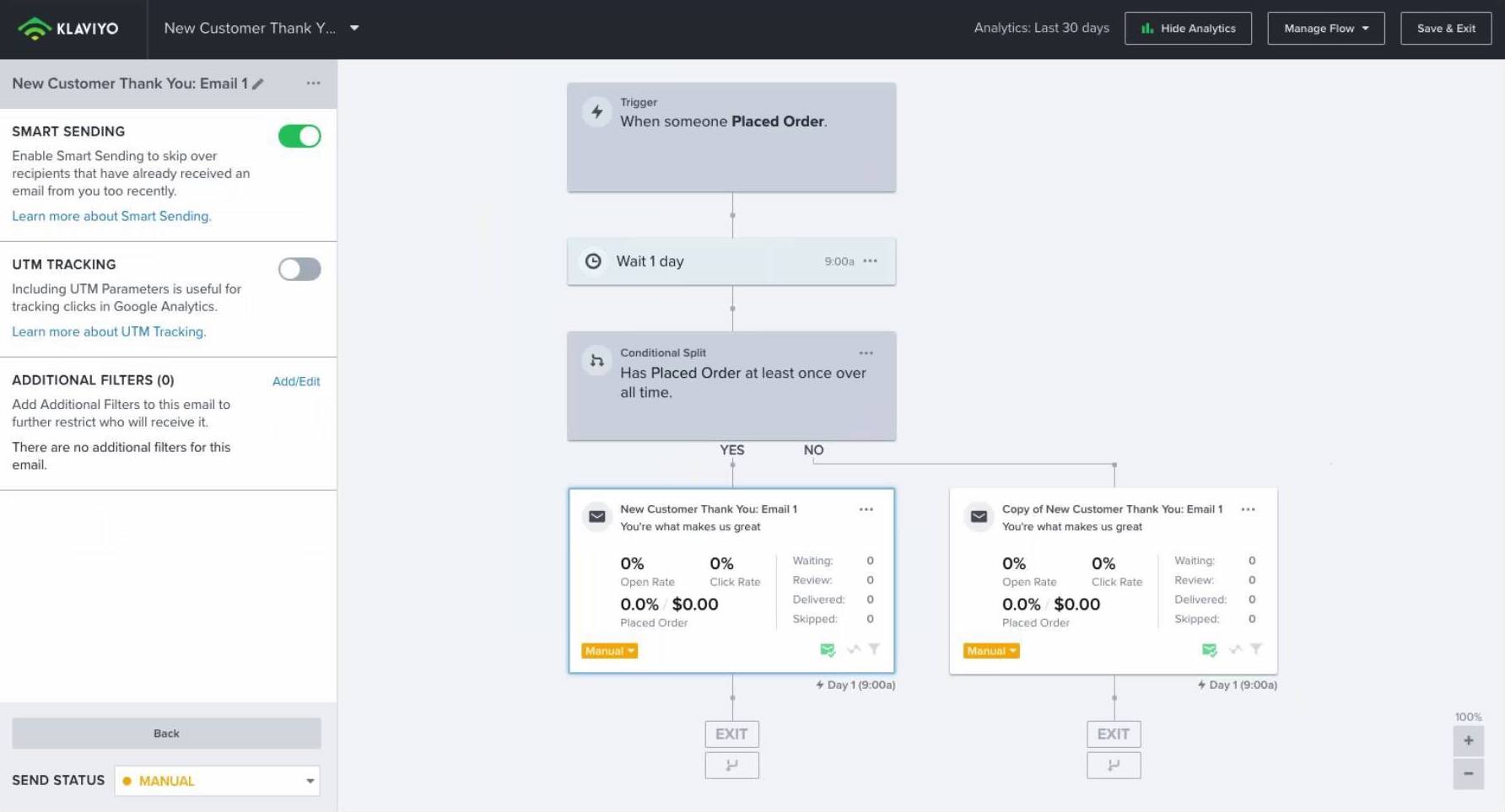
With the sophistication of the email marketing tools now available on the market, sending only promotional email campaigns are soon to be a thing of the past.
Consumers are getting less and less attracted to blanket email promotional campaigns. Instead, they crave personalized emails that communicate exactly what they are looking for or need. This is where email marketing automation comes into play.
Email marketing automation allows you to send emails based on behaviors or characteristics of your customers. This gives your store the automated ability to up-sell, cross-sell and recover potentially lost revenue.
There are many different automation campaigns you can create to help boost your stores revenue beyond this and which is why we highly recommend this a top revenue driver for stores.
Here are some email automation flows you can set up today:
The Cart Abandonment Flow
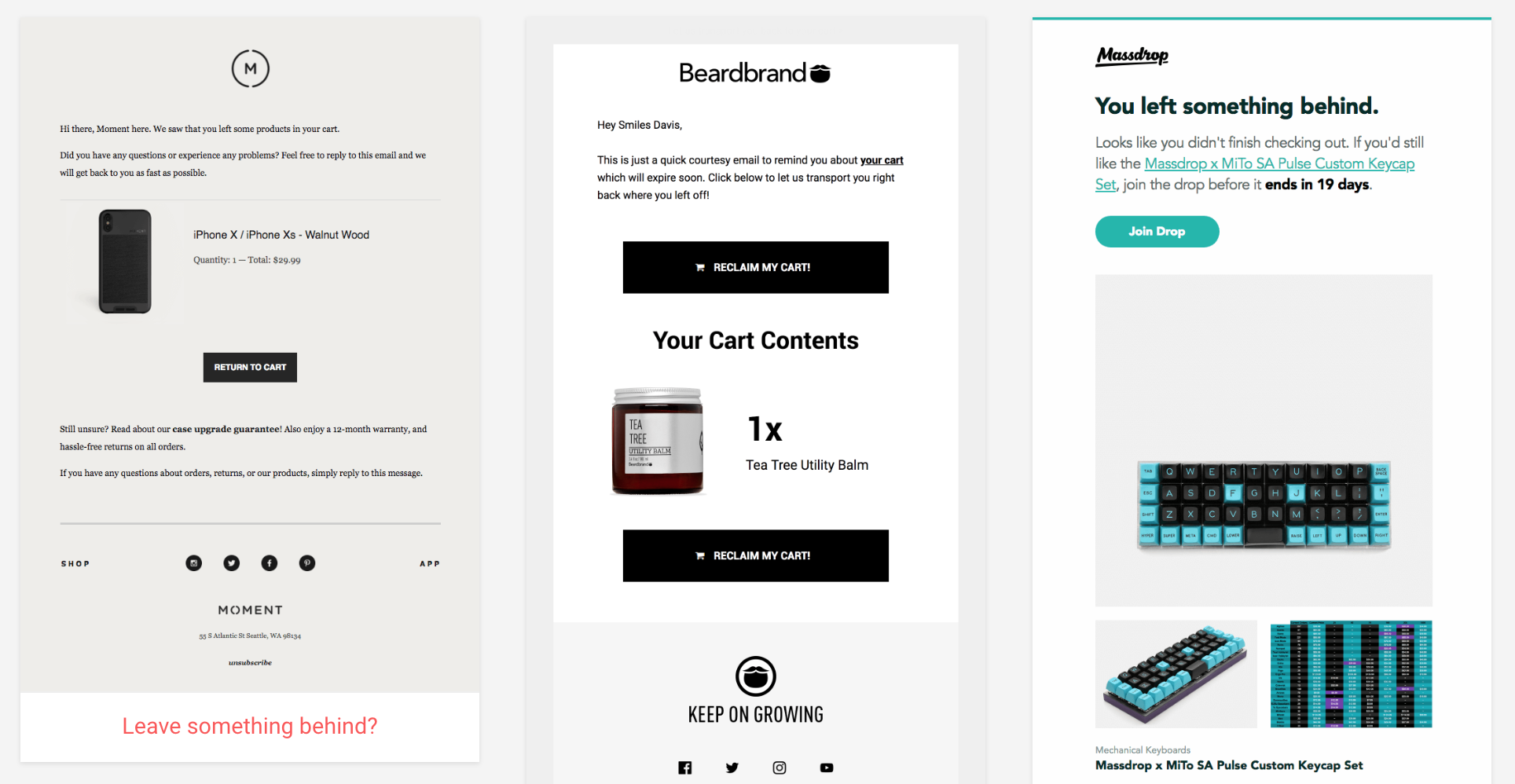
Abandoned cart emails are a prime example of email marketing automation at it’s best. With 66% of consumers abandoning their carts, abandoned cart emails give you the ability to retrieve back some of that lost revenue by reminding people of their lost purchase.
We like to set these up as a series of 3 emails. The first to remind the shopper of their cart, the second to provide a promo code to entice the sale and the last to stress urgency in losing the promo and product(s).
This is the one with the biggest bang for your buck, so if you were to set up any of these, this is the very least to do.
The Welcome Flow
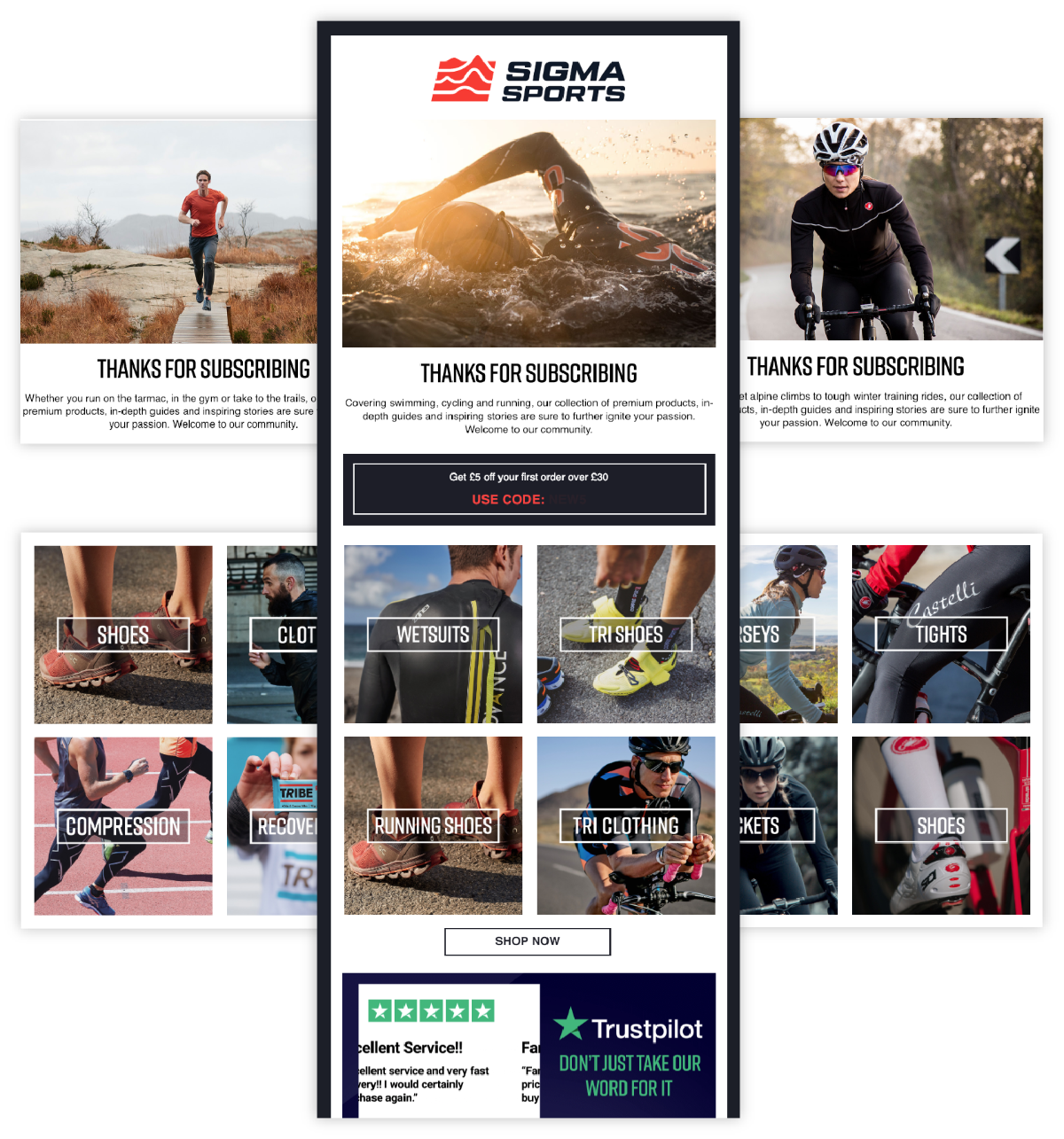
This flow is essential to introducing the shopper to your brand. You can send a series of emails showcasing your best products, top blog posts or encourage them to engage with your brand on social media. We like to give first time shoppers a promo code for their next purchase and it almost always results in repeat business.
The repeat purchase flow
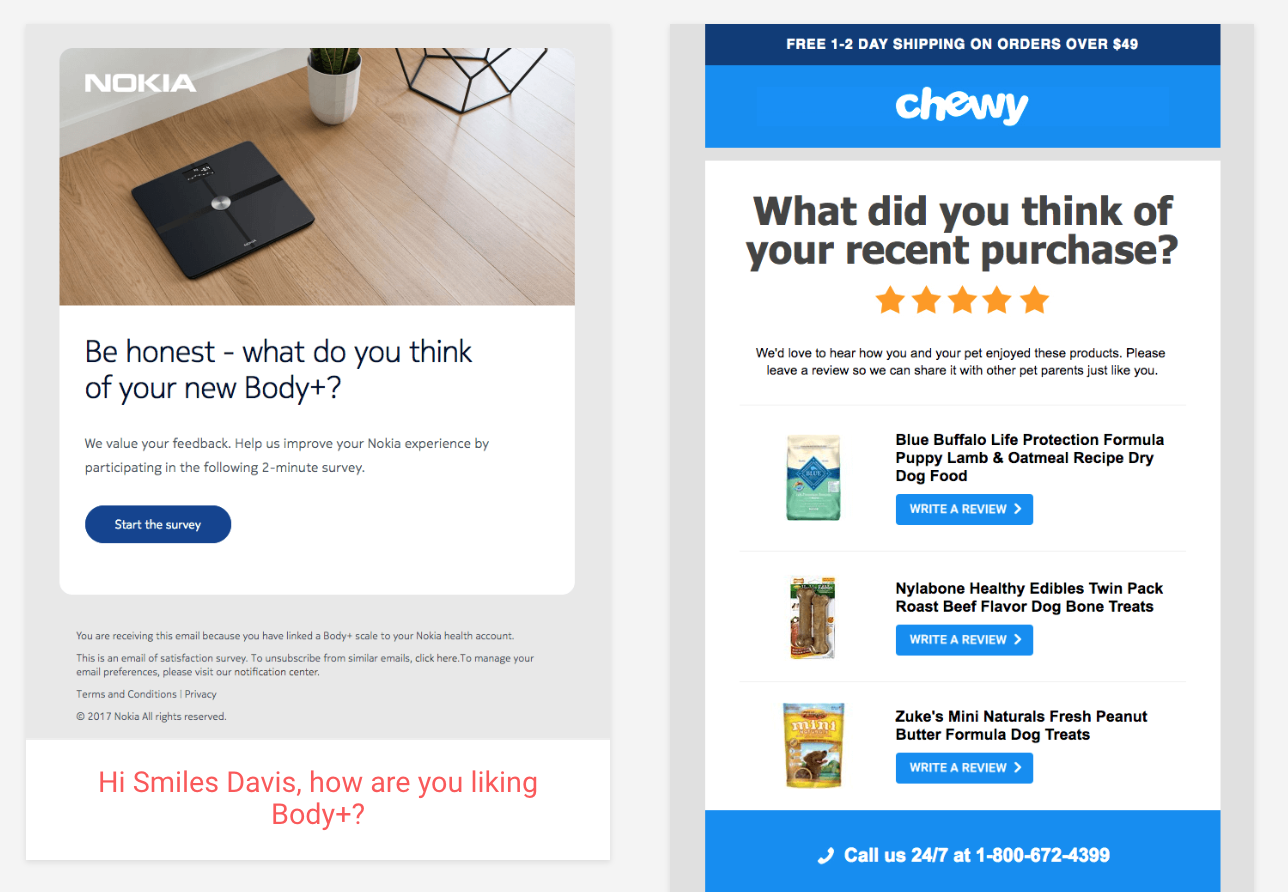
With a repeat purchase automation flow, you can send requests for product reviews, referrals, up-sells, cross-sells, etc.
The win-back flow
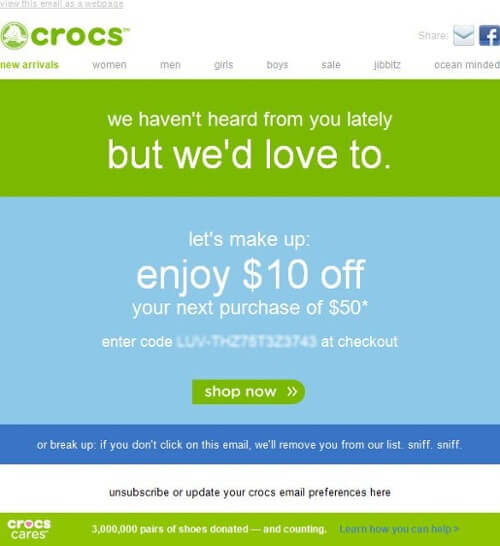
Some customers will come to your store, purchase something and never come back. If you’re running subscriptions, what do you do when someone cancels? Do you send them anything to try and win them back?
The win-back flow is the perfect remedy to revive those dormant customers or cancelled subscribers.
The browse abandonment flow
Sometimes people will window shop, browsing products over and over without pulling the trigger. This flow is perfect for engaging them to make the buy.
The replenishment flow
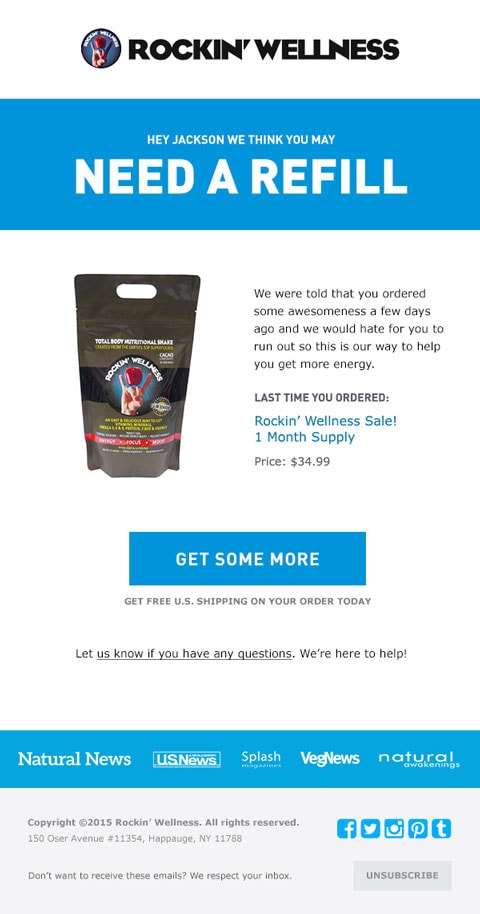
Do you have products that are bought repeatedly by the same customers? This flow is perfect to help remind shoppers to “re-up” on products on a regular basis.
The failed payments flow
What do you do when payments fail or credit cards expire? Do you reach out to your customers manually to fix their cards? The failed payment flow helps automate this.
Tools for email automation
We use and recommend Klaviyo for all our email automation needs. Klaviyo is unique in that it’s much more than email software. It’s almost it’s own CRM platform, where you can track individual customer website and shopping activity.
Some other notable solutions worth checking out are AutomateWoo for WooCommerce, ActiveCampaign and Conversio.
5. Run Google Shopping Ads
If you have a medium to large catalog of products, consider submitting it to Google Merchant Center and creating some Google Shopping Ads.
Google Shopping Ads are great way to leverage searches from Google and drive some traffic to your store based on what people are actually searching for. Because you’re targeting people based on what they’re searching for, their buying intent is usually higher than other channels.
These ads differ from standard AdWords, in that they show your actual products within the Google Shopping section of Google search.
They allow you to present a catalog like searching experience for customers who are searching for products online. For example, the following image represents a search for “Nike Jordans”.
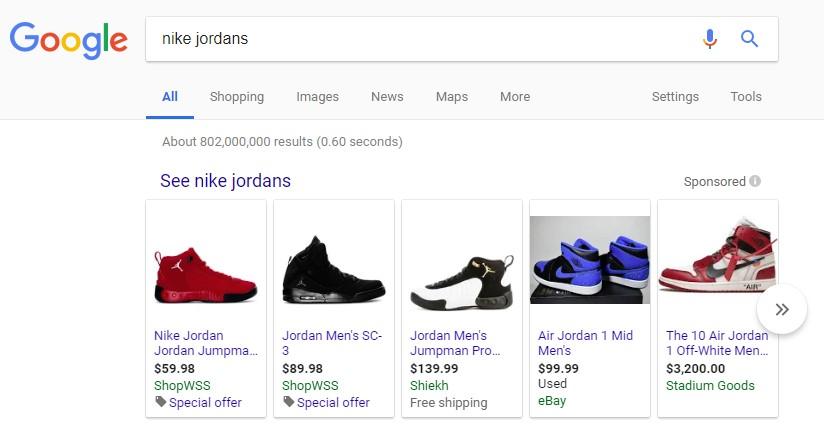
Each of these products are really an ad, created within the AdWords interface. The ad displays your product information as, provided from your store, and displays it in Google’s preferred shopping experience format.
Once users click the purchase buttons, they are then redirected to your site and product page to buy.
Google Shopping Ads require a bit of technical steps to set up a product feed that you submit to Google. But once completed, you can have make the process automated to submit your products every night.
If you need help setting up your product catalog and getting your campaigns started, give us a ping.
Conclusion
In summary there are many other things you can do to give your store a boost but we’ve found and recommend these top 5 to get started the fastest. Leave a comment if you feel there are other strategies worth mentioning.

